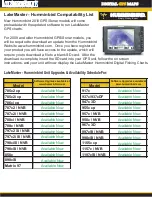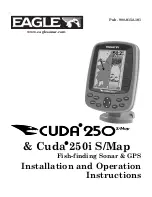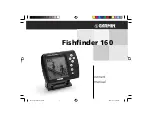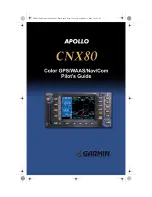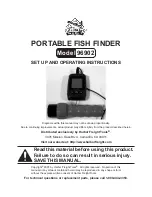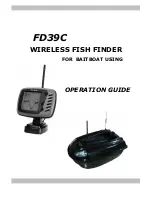
4
BASIC CONCEPTS OF VEXILAR USE
Vexilar FL/FLX series color flashers are great tools for open water and
ice fishing. Once you learn to understand the basic concepts and meaning
of the color display, you can apply this knowledge to greatly increase your
fishing success. All the FL/FLX Series flashers can be used for:
• Determining the current depth at any boat speed.
• Locating fish-holding underwater structure.
• Determining the bottom hardness and transition lines.
• Penetrating thick vegetation to see what’s below.
• Finding fish and the bait they feed on.
• Watching your bait and the fish around it.
Range Control
Depth Range determines the maximum depth of water in which the
flasher can see the bottom. For example, the shallowest range available
on the FL-18 is 0 to 20 feet. This means that if the water depth is between
zero and 20 feet, the bottom will be displayed on the screen. If the water
depth gets deeper than 20 feet, you will need to select a deeper depth
range in order to see the bottom. It is usually best to select the shallowest
depth range possible to see the bottom. This allows the water column
below to be represented by the greatest amount of display screen area.
This offers the highest resolution and makes things bigger and
easier to see.
Gain Control
Gain controls the amount of amplification applied to the return
sonar signal. Think of gain as your volume control. You turn up the
gain to see more of what’s below. You turn down the gain to see less
of what you don’t want to see. The goal is to find a gain level that
shows you as much real information as possible without displaying
stray signals of clutter and interference. Keep the gain setting as low
as possible for best overall performance.
Gain can sometimes act effect the total area of coverage below you.
As you increase the gain level, you can see things farther away from
the transducer. This can be helpful when looking for suspended fish,
but only turn it up temporarily as the signal distorts your targets into
big blobs of color. Unfortunately, a high gain setting won’t work in
weedy areas either, because the objects in the center of the cone will
get amplified and overlap anything on the outside, making these
objects impossible to distinguish.
Interference Rejection
This feature rejects sonar interference generated by other nearby
depth sounders. Interference Rejection, or IR, comes on automatically
when you turn the flasher on, and you can adjust it further if needed.
See page 6 for details.
Summary of Contents for FL-18
Page 2: ......






















